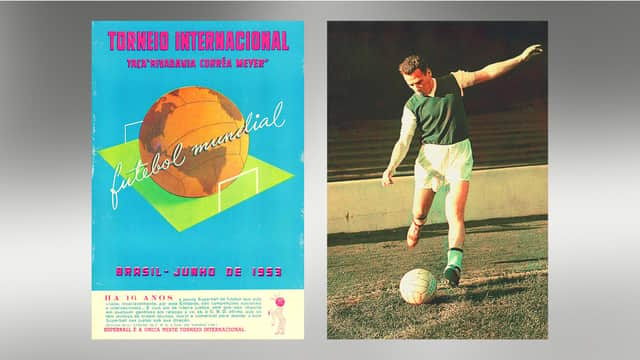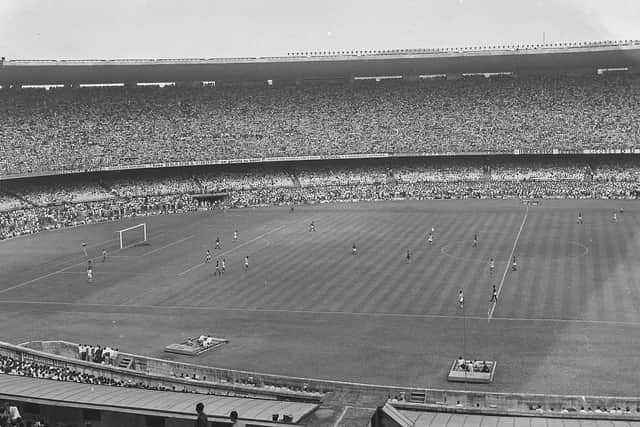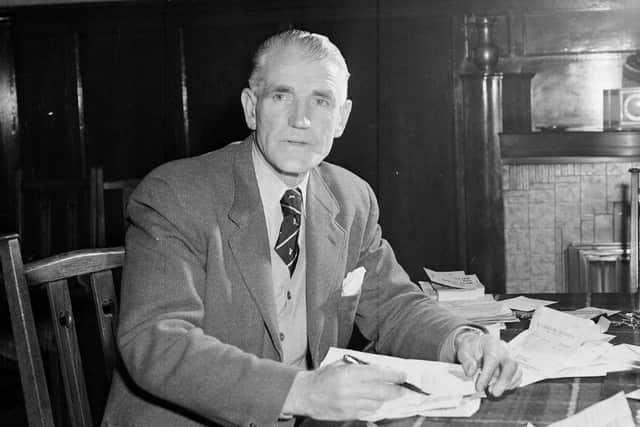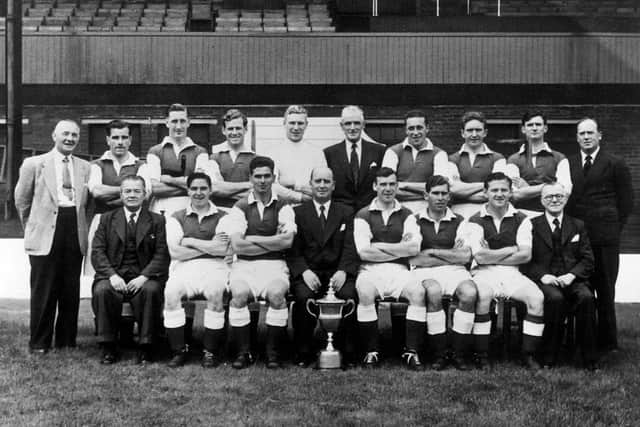When Hibs travelled to Brazil to play in first Club World Cup


The 1950 World Cup, held in Brazil, gave local sports journalist Mário Filho an idea: what if there was a World Cup for clubs rather than nations?
Filho – whose standing in his country is such that the Maracanã’s official name is the Estádio Jornalista Mário Filho – presented his idea during the tournament, earning support from not only the Confederação Brasileira de Desportos (Brazilian Sports Confederation, essentially the Brazilian FA) but also World Cup founder Jules Rimet, secretary of the English FA Stanley Rous, and Italian Football Federation chief Ottorino Barassi.
Advertisement
Hide AdAdvertisement
Hide AdTwo high-ranking FIFA officials were tasked with organising the competition and the Brazilian media referred to the tournament as the ‘Club World Cup’ and the ‘World Champions Cup’.


The new tournament would be called the Copa Rio and would not fall under FIFA’s jurisdiction as it was organised and sponsored by the Brazilian FA, but it did serve as a model for the European Cup, now Champions League, established in 1955.
How were clubs selected?
With no FIFA world rankings, clubs were chosen largely on their country’s perceived place in the football hierarchy. Newspaper reports of the time suggested that the make-up would be the two champions from the Rio de Janeiro and São Paulo state leagues in Brazil plus representatives from Uruguay, Italy, Spain, England, Portugal, and Scotland.
Uruguay and Italy were previous World Cup winners and along with Spain and England had competed in the 1950 edition. England were viewed as the founders of football while Scotland’s performances in the British Home Championship earned them a spot, and inviting the Portuguese champions made sense because of the large Portuguese community living in Rio de Janeiro and São Paulo.


Advertisement
Hide AdAdvertisement
Hide AdGlobal football was in a bit of a quagmire at the time. Germany and the Iron Curtain nations were still excluded from international football, and Argentina and Brazil were feuding as a result of a 1946 on-field brawl between the two teams.
Thanks but no thanks
Disaster struck ahead of the inaugural Copa Rio as clubs from England, Scotland, and Spain, including Hibs all declined invitations.
Vasco da Gama, Palmeiras, Sporting CP, Austria Wien, Nacional of Uruguay, Red Star Belgrade, Juventus, and OGC Nice eventually took part in two four-team leagues based in Rio de Janeiro and São Paulo with Palmeiras emerging victorious with a 3-2 aggregate defeat of Juventus.


The 1952 edition followed a similar path: no clubs from England, France, Italy, Scotland, or Spain participated with Hibs again among the invited teams. Several nations declined to send their champions for various reasons and again, a hastily cobbled-together collection of teams competed in the tournament.
Advertisement
Hide AdAdvertisement
Hide AdFluminense, celebrating their 50th anniversary, won an all-Brazilian final against Corinthians but it was the last Copa Rio to be held.
Torneio Octogonal Rivadavia Correa Meyer
In 1953, the Brazilian FA had another go at organising an intercontinental club football competition.
It was broadly similar to the Copa Rio, but given the name Torneio Octogonal Rivadavia Correa Meyer, named for the Brazilian Sports Confederation president.
The invited teams were Brazilian sides Botafogo, Corinthians, São Paulo, and Vasco da Gama; Uruguay’s Nacional; Club Olimpia of Paraguay; Sporting CP of Portugal, and Hibs, with Fluminense replacing Nacional after the Uruguayan FA forbade them from participating.
Advertisement
Hide AdAdvertisement
Hide AdHibs would be competing in the Rio de Janeiro mini-league at the Maracanã against Botafogo, Fluminense, and Vasco da Gama.
Arrival in Brazil
Hibs reached Brazil on Thursday, June 4, with their first match fixed for the Sunday against Vasco da Gama.
Tommy Younger started in goals with Jock Govan and Hugh Howie in defence; Archie Buchanan, Jock Paterson, and Bobby Combe in the midfield, and a forward line of Smith, Johnstone, Reilly, Turnbull, and Ormond.
The home side took the lead after just ten minutes in front of a sizeable crowd, with Turnbull equalising just before the 30-minute mark.
Advertisement
Hide AdAdvertisement
Hide AdOn 65 minutes Reilly fired Hibs in front after some neat build-up play, with Vasco da Gama levelling on 78 minutes. The locals then re-took the lead with time running out, before “Last-minute Reilly” lived up to his nickname with a late goal to earn a share of the spoils.
Hibs were not as lucky in their next game, losing 3-1 to Botafogo on June 13 with Reilly on the scoresheet, while Fluminense ran out 3-0 winners in the final game on June 20. Vasco da Gama would go on to beat São Paulo in the final.
Despite Hibs struggling with the climate and change in diet and failing to live up to expectations, Botafogo still attempted to sign Gordon Smith and Lawrie Reilly, with club chiefs telling the players: “Name your price and we’ll pay it.” Both declined the offer.
‘The boys must be tired’
Speaking after the tournament chairman Harry Swan admitted his disappointment at the team’s early return but added: “Our lads went out there determined to strike a blow not just for themselves or the Hibs but for Scotland.
Advertisement
Hide AdAdvertisement
Hide Ad"Considering the strenuous five years that our first team have completed in Britain and on the continent, it may turn out to be a blessing in disguise.
"The boys must be tired.”
Despite that, Hibs left a lasting impression in Brazil. Ahead of the 1970 World Cup, a “football encyclopaedia” was printed in Brazil containing a whole chapter devoted to Hibs, the team’s style of play, and tactical diagrams, with reference to the Famous Five.
Given the success enjoyed by Hibs during the early 1950s it is not unthinkable that some of the team’s techniques may have been adopted and developed by the Brazilians.
A message from the Editor:
Thank you for reading this article. We're more reliant on your support than ever as the shift in consumer habits brought about by Coronavirus impacts our advertisers.If you haven't already, please consider supporting our sports coverage with a digital sports subscription.
Comment Guidelines
National World encourages reader discussion on our stories. User feedback, insights and back-and-forth exchanges add a rich layer of context to reporting. Please review our Community Guidelines before commenting.